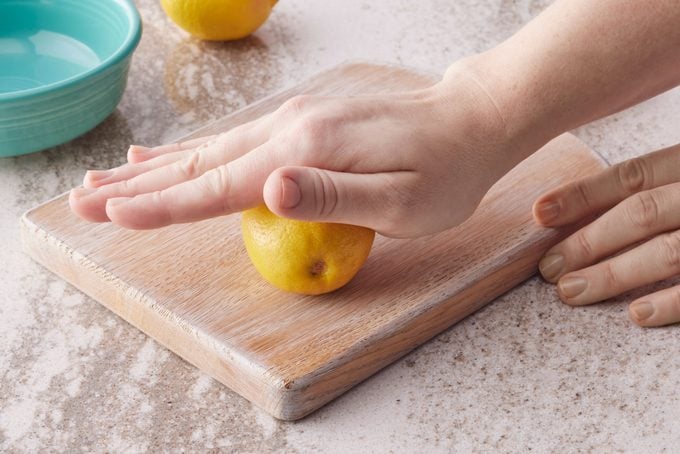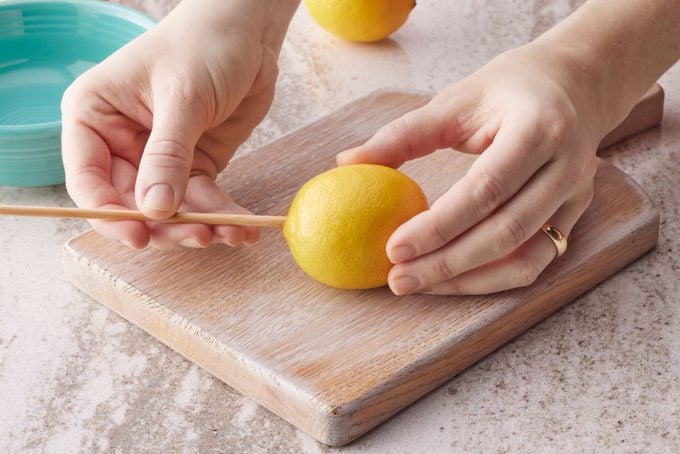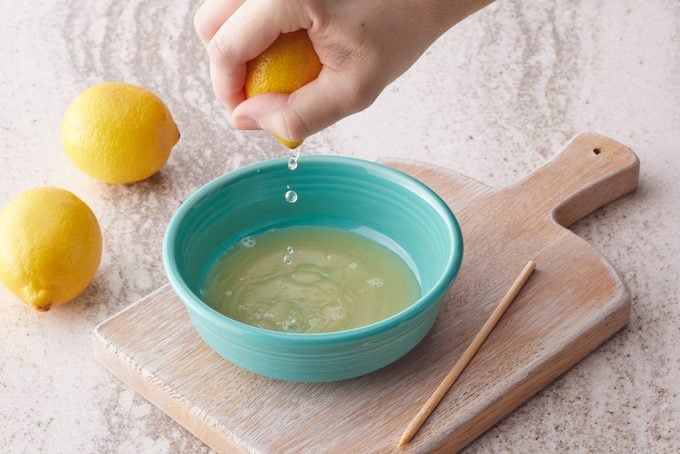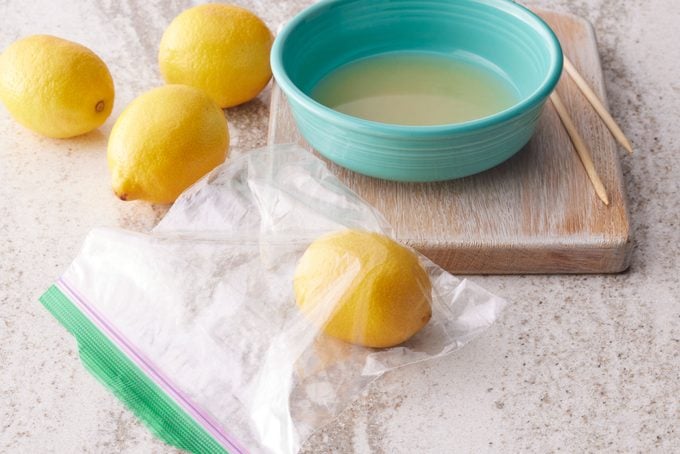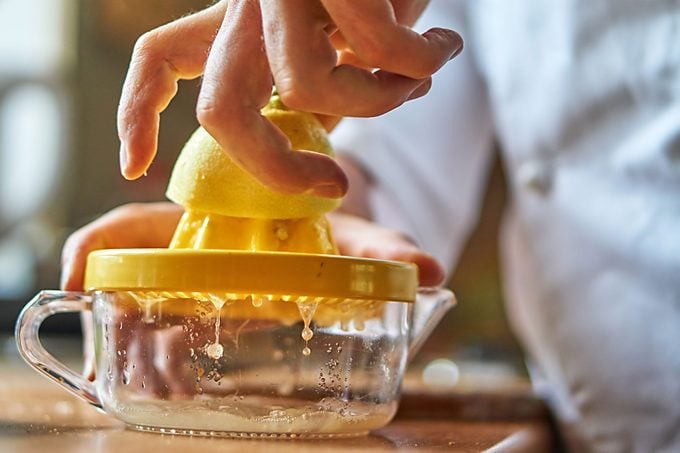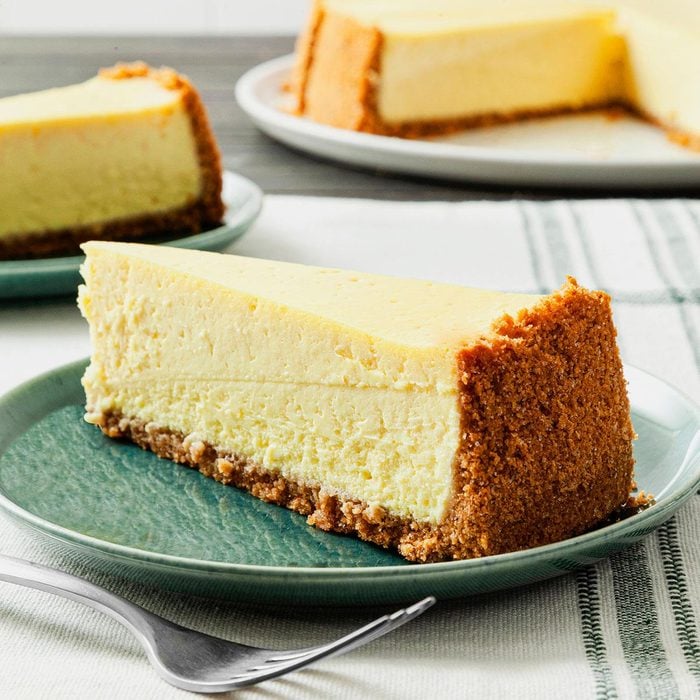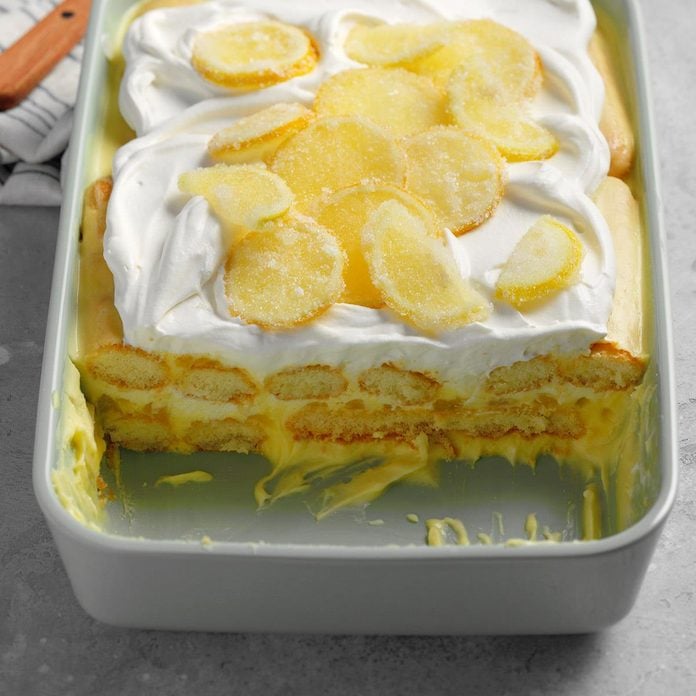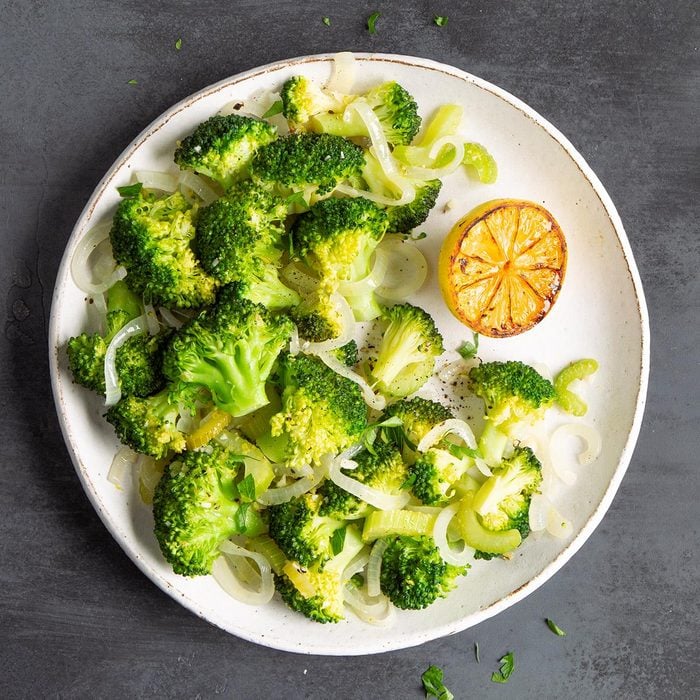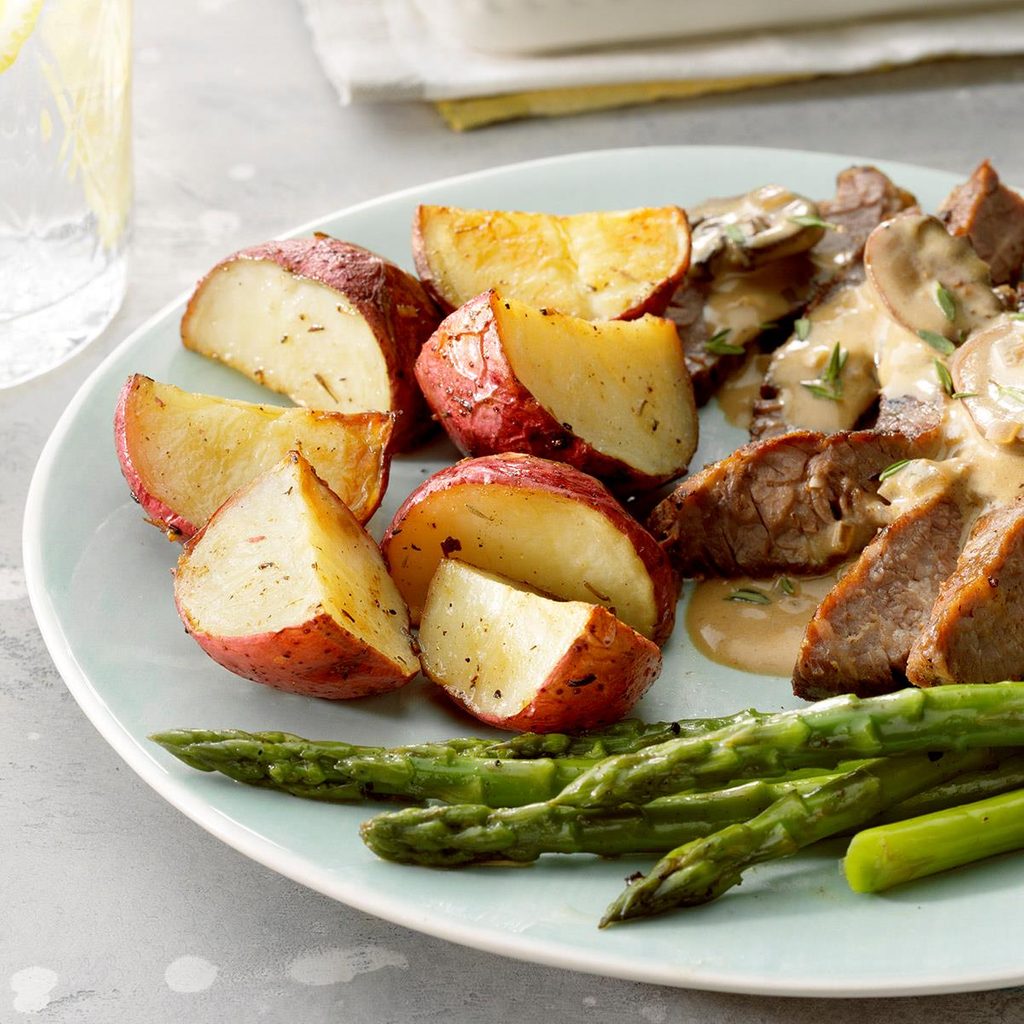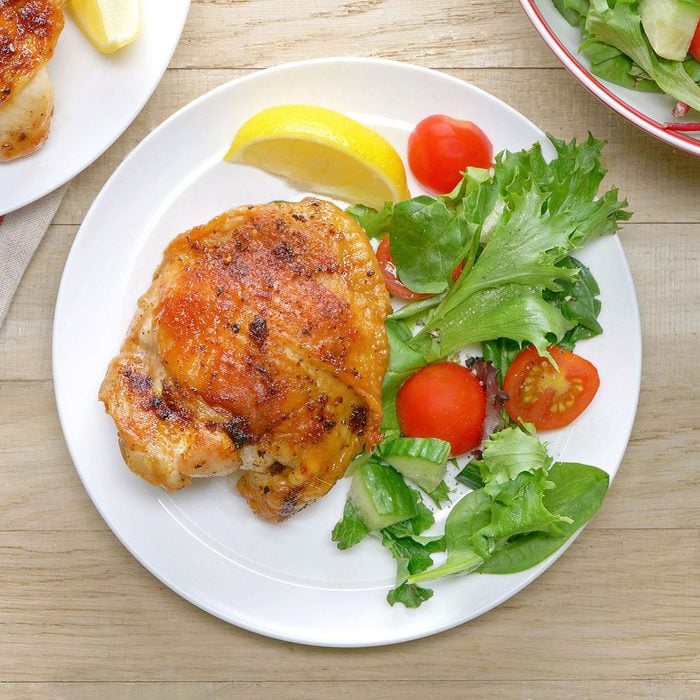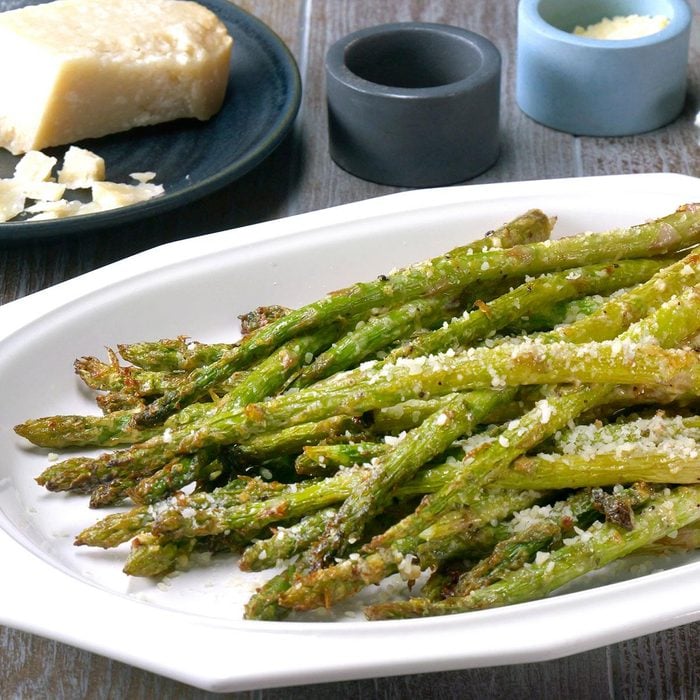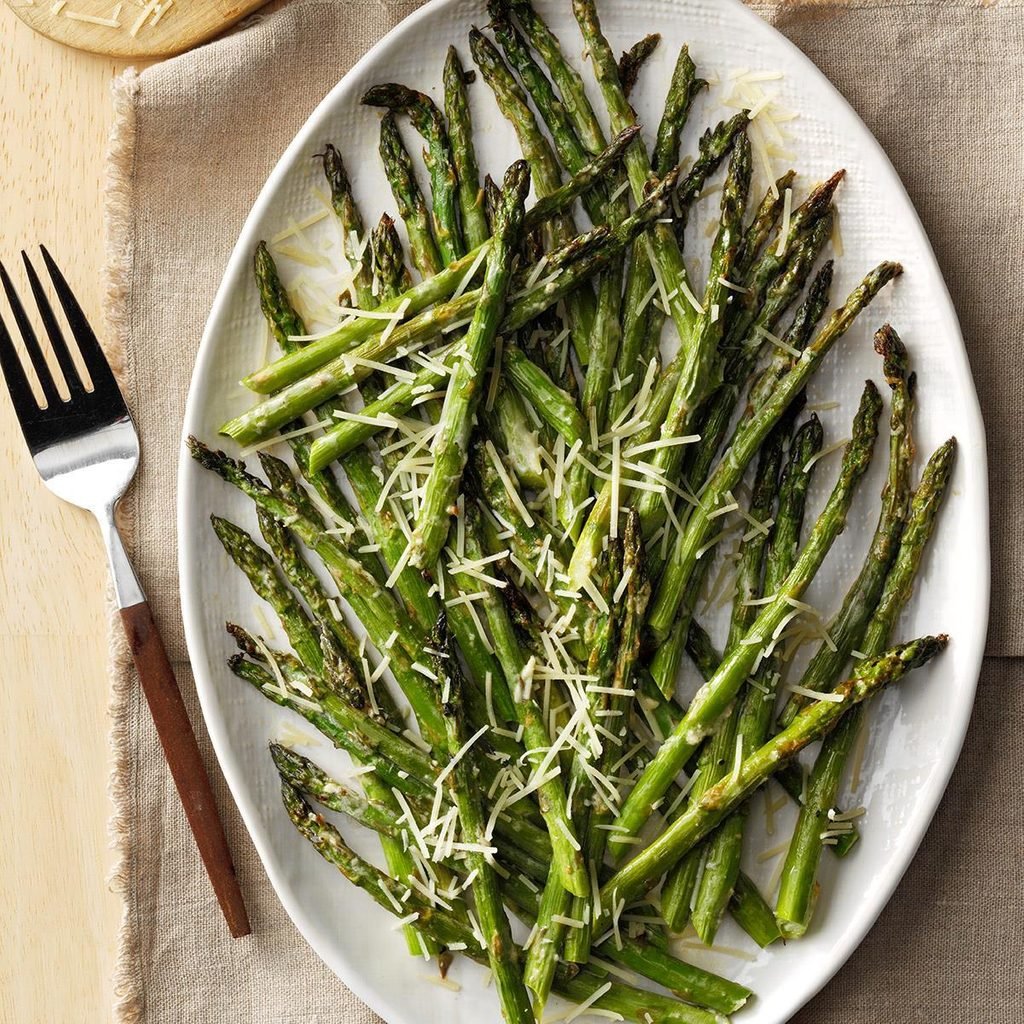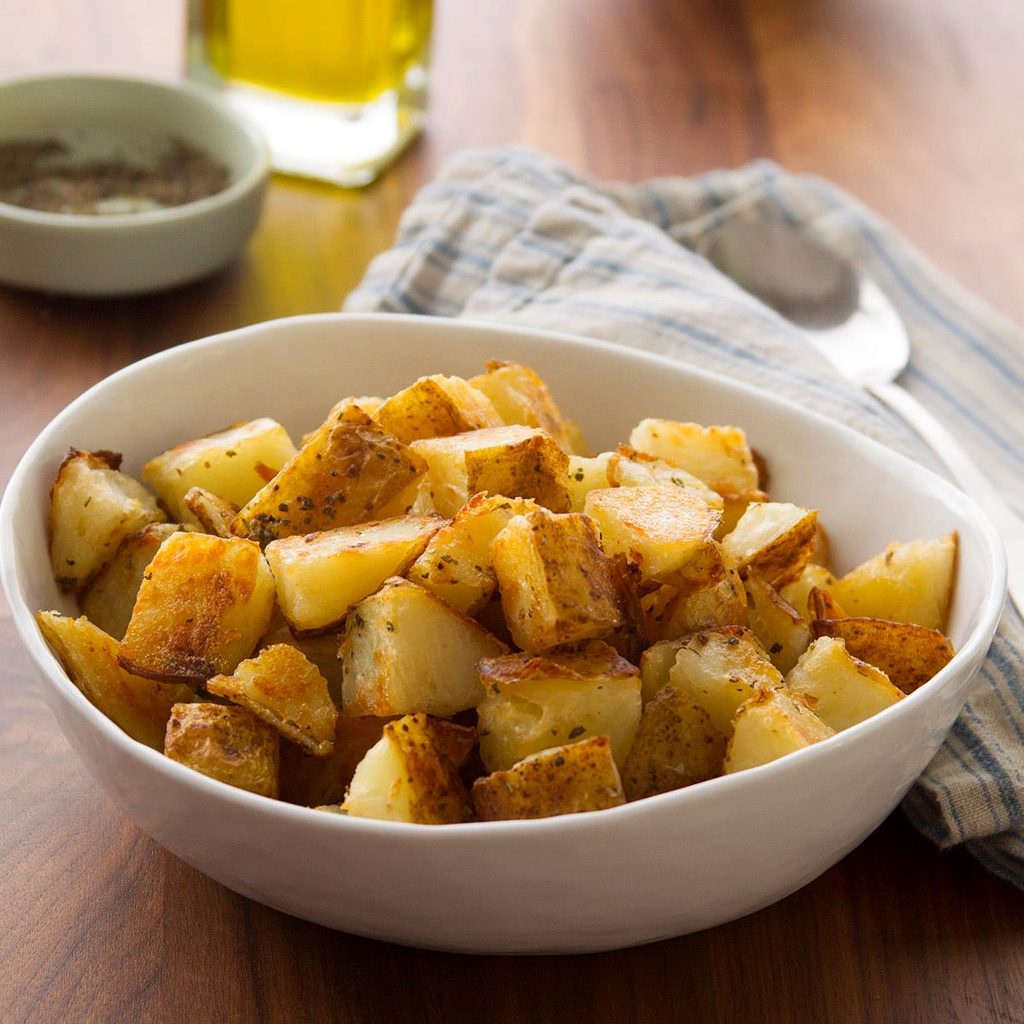Sheet-Pan Lemon Garlic ChickenTotal Time: 1 hour + marinating
Main Ingredients: Chicken thighs and drumsticks, garlic, lemon, baby red potatoes
Level: Beginner
Lemon juice makes the ideal acidic base for a zesty, herb-filled marinade. Round out this versatile
sheet-pan dinner with an
easy side salad and rice.
"Everyone needs an easy meal. Try this sheet-pan chicken with roasted potatoes for a simple and tasty meal guaranteed to please the whole family. If you use fresh lemon juice, garnish each serving with a little lemon zest for bright flavor." —Recipe contributor Andrea Potischman, Menlo Park, California
Bake-Sale Lemon BarsTotal Time: 45 minutes + cooling
Main Ingredients: Butter, flour, eggs, sugar, lemon
Level: Intermediate
Both sweet and tart, lemon bars should be a staple in your dessert repertoire. We like to intensify their lemony brightness by adding a teaspoon of zest to the filling.
"The recipe for these tangy lemon bars comes from my cousin, who is famous for cooking up farm feasts." —Recipe contributor Mildred Keller, Rockford, Illinois
Raspberry Lemon CakeTotal Time: 1 hour, 35 minutes + chilling and cooling
Main Ingredients: Eggs, sugar, lemon, butter, vanilla, flour, cream cheese, raspberry jam
Level: Advanced
Rich homemade lemon curd, moist lemon cake and dreamy raspberry-lemon frosting come together in perfect harmony to form one showstopping treat. Given that poppy seeds pair so well with
lemon desserts, you could mix two tablespoons into the batter for added texture and color.
"Want a change from chocolate cake? Try this elegant lemon raspberry cake packed with refreshing citrus flavor, from the cake to the homemade lemon curd and creamy frosting. It won a blue ribbon at the Alaska State Fair and it's definitely a winner with me." —Recipe contributor Shirley Warren, Thiensville, Wisconsin
Lemon Dream CheesecakeTotal Time: 1 hour, 25 minutes + chilling
Main Ingredients: Graham crackers, butter, sugar, cream cheese, lemon
Level: Intermediate
To avoid
cracks in your cheesecake, be careful not to overbake. You want the center to be
almost set. We recommend lightly greasing the springform pan with butter or cooking spray, even if it already has a nonstick coating, so the cake comes out perfectly intact.
"Light and creamy, this lemon cheesecake recipe is just the thing for a spring or summer day." —Recipe contributor Bonnie Jost, Manitowoc, Wisconsin
Garlic-Lemon Shrimp LinguineTotal Time: 30 minutes
Main Ingredients: Linguine, shrimp, garlic, lemon, parsley
Level: Beginner
A tangy trifecta of lemon pepper seasoning, zest and juice complement the succulent shrimp in this pasta. Cooking
shrimp recipes with olive oil and butter keeps them juicy and tender.
"The Cheesecake Factory has an extensive menu, but I always seem to order their delicious fresh and citrusy Lemon-Garlic Shrimp with pasta. I'd enjoyed it enough times that I was confident I could reproduce it to share with friends and family. I think I hit it spot on! When I have fresh basil from the garden I use that instead of parsley." —Recipe contributor Trisha Kruse, Eagle, Idaho
World's Best Lemon PieTotal Time: 1 hour + chilling and cooling
Main Ingredients: Pie dough, sugar, flour, egg, butter, lemon
Level: Advanced
You can make this airy, decadent dessert with
premade pie crust from the store or make your own using our go-to
pie crust recipe. We even like using a
graham cracker crust for a bit of golden nuttiness.
"Mother's pies were always so memorable, with tender, flaky crusts. In summer the order of the day was lemon meringue!" —Recipe contributor Phyllis Kirsling, Junction City, Wisconsin
Lemony Limoncello TiramisuTotal Time: 25 minutes + chilling
Main Ingredients: Mascarpone cheese, eggs, milk, sugar, lemon, limoncello, lemon curd, ladyfinger cookies
Level: Intermediate
Adding limoncello and lemon curd to this nontraditional tiramisu offers a pop of brightness that complements rich mascarpone. Ideally, you want to let this dessert sit in the refrigerator overnight, allowing the ladyfingers to absorb all the flavor and moisture.
"This is a great citrus twist on a classic Italian dessert. It's always a favorite at holiday meals and summer family gatherings! The lemon curd can be a little difficult to spread; a neat trick is to use a piping bag to add it in an even layer, then use a spatula to smooth it." —Recipe contributor Deena Resnick, Oregon City, Oregon
Lemon Herbed SalmonTotal Time: 30 minutes
Main Ingredients: Bread crumbs, salmon, garlic, parsley, Parmesan cheese, lemon, butter
Level: Beginner
Herby bread crumbs mixed with lemon zest and Parmesan make a savory crust for salmon (and just about any other fish). Choose one of our fantastic
side dishes for salmon to serve alongside the main course.
"We sometimes send our Washington salmon all the way to Michigan for my sister to use in this family-favorite dish! The tasty topping can be used on other types of fish as well. Fresh thyme from your garden really sparks the flavor." —Recipe contributor Perlene Hoekema, Lynden, Washington
Lemon Mushroom ChickenTotal Time: 30 minutes
Main Ingredients: Chicken breast, flour, butter, chicken broth, mushrooms, lemon
Level: Beginner
Lemon juice, sliced mushrooms, broth and the crispy bits from chicken breasts create a restaurant-worthy pan sauce you'll want to spoon over everything. Serve sides that can sop up the bright yet earthy flavors, like mashed potatoes or egg noodles.
"There's a lot of flavor in this dish. The best part? It doesn't seem light at all!" —Recipe contributor Carrie Palmquist, Canova, South Dakota
Steamed Lemon BroccoliTotal Time: 20 minutes
Main Ingredients: Broccoli, butter, onion, celery, garlic, lemon
Level: Beginner
This is one of the
simple broccoli recipes we always fall back on. Steaming broccoli until it's bright green and crisp-tender and then tossing it into a garlicky butter sauce with fresh lemon results in a gorgeous—and quick—side dish. Even picky eaters at the table will love it.
"I first tried this sunny side dish because it seemed to be a fresh, nutritious and easy combination. Now it's the only way my husband will eat broccoli. I love to pair it with grilled meat on hot days." —Recipe contributor Michelle Hanson, Oacoma, South Dakota
Lemon Roasted Red PotatoesTotal Time: 50 minutes
Main Ingredients: Small red potatoes, lemon, thyme, garlic sauce
Level: Beginner
Tender, earthy roasted potatoes are a wonderful vehicle for absorbing lemon-garlic goodness. Add even more lemony punch by mixing a teaspoon of lemon zest into the sauce.
"I like trying out new recipes on my boyfriend, and he's always willing to taste-test. The lemon juice and thyme give these golden potatoes fabulous flavor." —Recipe contributor Sally Sue Campbell, Greenville, Tennessee
Blueberry Lemon CakeTotal Time: 45 minutes
Main Ingredients: Butter, sugar, lemon, blueberries, cake mix, whipped cream
Level: Beginner
A great trick for jazzing up boxed yellow cake mix is working in citrus zest and berries, like we do in this recipe. You can use fresh or frozen blueberries; if you use frozen, don't thaw them. (Here's
how to freeze blueberries so you'll always have them on hand.)
"I always set aside some of my fresh-picked blueberries to make this tender lemon blueberry cake. Using cake mix makes it a quick and easy dessert." —Recipe contributor Leona Luecking, West Burlington, Iowa
Lemon Chess PieTotal Time: 50 minutes + chilling
Main Ingredients: Pie crust, eggs, sugar, lemon, butter, flour
Level: Beginner
Making pie crust from scratch might seem daunting, but once you get the hang of it, you'll be able to whip up the flaky foundation for so many
homemade pies, including this rich lemon chess pie. Of course, there's no shame in using premade crusts when you're in a pinch or want dessert ASAP.
"This bright and creamy lemon chess pie cuts beautifully and has a smooth texture. It's one of my favorites." —Recipe contributor Hannah LaRue Rider, East Point, Kentucky
Fried Lemon-Pepper WingsTotal Time: 30 minutes
Main Ingredients: Chicken wings, flour, butter, lemon-pepper seasoning, parsley
Level: Beginner
These zesty, perfectly tender chicken wings are flavorful enough on their own, but why not go all in and serve with creamy
homemade ranch dressing? Round out the menu with crunchy
crudités and your game day spread is complete.
"These lemon-pepper wings are perfect for game day. Try these out if you've been stuck in a chicken wing rut. Add grated lemon zest to the butter mixture if you want a more pronounced lemon flavor." —Taste of Home
Test Kitchen
Lemon Ricotta PancakesTotal Time: 30 minutes
Main Ingredients: Rhubarb, brown sugar, flour, ricotta cheese, milk, lemon
Level: Beginner
For a thoroughly impressive brunch spread, serve these light, creamy ricotta pancakes with lemon garnish and lots of rhubarb sauce. If you can't get your hands on rhubarb to make the sauce, fold frozen raspberries into the pancake batter for that hit of tartness.
"I'm a firm believer that rhubarb recipes cannot be too plentiful. Here, it is featured in the sauce for lovely lemon pancakes. These are yummy for brunch." —Recipe contributor Marilyn Rodriguez, Spark, Nevada
Lemon Sheet CakeTotal Time: 30 minutes + cooling
Main Ingredients: Lemon cake mix, eggs, lemon pie filling, cream cheese, butter
Level: Beginner
If you don't already have a can of lemon pie filling in your pantry, we recommend you stock up
—if only for this rich, fluffy
lemon dessert. We like to top this quick sheet cake with
homemade whipped cream and candied lemon slices.
"Lemon pie filling lends a splash of citrus flavor to a convenient cake mix, and a rich cream cheese frosting gives it sweetness. My family likes this lemon sheet cake cold, so I cut it into squares and freeze it before serving." —Recipe contributor Alyce Dubisar, North Bend, Oregon
Air-Fryer Chicken ThighsTotal Time: 20 minutes
Main Ingredients: Bone-in chicken thighs, spices
Level: Beginner
Juicy on the inside and crispy on the outside, these herby chicken thighs are one of our favorite
air-fryer recipes. We find bone-in chicken thighs work best for this recipe, but you could substitute boneless. Just bear in mind that they won't take as long to cook.
"This air-fryer chicken thighs recipe creates meat that is crispy on the outside but super juicy on the inside. The paprika and garlic seasoning blend comes through beautifully." —Taste of Home
Test Kitchen
Lemon-Garlic Cream FettuccineTotal Time: 40 minutes
Main Ingredients: Lemon, parsley, garlic, fettuccine, plum tomatoes
Level: Intermediate
Cream cheese is the secret ingredient in this luscious lemony pasta dish, as it binds all the flavors together and coats each strand of fettuccine. To round out the meal, top this pasta with
buttery grilled shrimp and serve with a bright green
side salad.
"I've been making this lemony pasta for the family for years. It's both simple and indulgent enough to make it a go-to recipe." —Recipe contributor Anne Miller, Glenfield, New York
Lemon SnowflakesTotal Time: 40 minutes
Main Ingredients: Lemon cake mix, whipped topping, egg, confectioners' sugar
Level: Intermediate
If you haven't been using boxed cake mix to make cookies, get on board! These four-ingredient snowflake treats are festive, fun and customizable. Try mixing chopped walnuts into the batter or experimenting with other flavors of cake mix.
"You'll need just four ingredients to make these delightful lemon snowflake cookies. Confectioners' sugar highlights the cracked tops to give them their snowflake appearance." —Recipe contributor Linda Barry, Dianna, Texas
Lemon Sour Cream Pound CakeTotal Time: 1 hour, 15 minutes + cooling
Main Ingredients: Butter, sugar, eggs, lemon, sour cream
Level: Beginner
This picture-worthy lemon Bundt is the star of any dessert table it's on. For an extra pop of texture, mix poppy seeds into the batter. We also like to serve this with fresh raspberries and a dollop of
homemade whipped cream.
"Everyone raves about this pretty lemon sour cream pound cake—and it sure doesn't last long with my family. It also freezes beautifully, so why not make two and pop one into the freezer for another day?" —Recipe contributor Annettia Mounger, Kansas City, Missouri
Lemon BreadTotal Time: 50 minutes + cooling
Main Ingredients: Butter, sugar, eggs, lemon, flour, milk
Level: Beginner
Paired with lemon juice and zest, lemon extract brings even more sunshine to this loaf. There are plenty of ways to
use up a bottle of lemon extract so it doesn't sit in your pantry untouched for months.
"I often bake this sunshiny-sweet lemon bread when company's due. It has a loaf-like texture." —Recipe contributor Kathy Scott, Lingle, Wyoming
Tangy Lemon Chiffon PieTotal Time: 1 hour, 5 minutes + chilling and cooling
Main Ingredients: Pie dough, sugar, eggs, lemon, heavy cream
Level: Intermediate
Served chilled, this airy, decadent pie is a must-try dessert on a hot day. Deck out the topping with a chocolate drizzle, raspberries or blueberries.
"This lemon chiffon pie is so easy to make, you can put it together in no time at all. And it's impressive enough to share with guests!" —Taste of Home
Test Kitchen
Air-Fryer AsparagusTotal Time: 20 minutes
Main Ingredients: Lemon, garlic, asparagus, Parmesan
Level: Beginner
We can't get enough of
air-fryer veggie recipes, and these tasty, crisp asparagus make for quite an easy side dish. When you're choosing asparagus at the store, make sure the bunch is firm and vibrant green. Mushy tops are a sign that they're past their prime.
"This air-fryer asparagus recipe is packed with flavor, thanks to the lemon-garlic dressing that the spears are tossed in before roasting. It's a simple, quick side that goes with almost anything." —Recipe contributor Tina Mirilovich, Johnstown, Pennsylvania
Shaker Lemon PieTotal Time: 55 minutes + standing
Main Ingredients: Lemons, sugar, eggs, pie crust dough, vanilla
Level: Intermediate
To make sure your lemon slices get nice and thin for this lovely sweet-tart pie, use a
mandoline or very sharp knife. You can serve the pie at any temperature (warm, room temp or chilled), and it will always go well with a big scoop of
cream cheese ice cream.
"Also known as Ohio lemon pie, this Shaker lemon pie is a Midwestern favorite. Its thrifty use of whole lemons is unique and gives the pie a lovely combination of sweet, tart and slightly bitter flavors. Lemon lovers won't be able to stop at a single piece." —Recipe contributor Deb Perry, Traverse City, Michigan
Lemon Anise BiscottiTotal Time: 1 hour, 5 minutes + cooling
Main Ingredients: Eggs, sugar, lemon extract, vanilla extract, flour, anise seed
Level: Intermediate
We love to enjoy these crispy lemon biscotti alongside (or dipped in) a
homemade latte or cup of tea. The cooled biscotti can be kept in an airtight container for up to two weeks.
"With the growing popularity of gourmet coffees, cappuccino and espresso, I'm finding lots of people enjoy these classic Sicilian dipping cookies." —Recipe contributor Carrie Sherrill, Forestville, Wisconsin
Lemony Pineapple Iced TeaTotal Time: 30 minutes + chilling
Main Ingredients: Mint, tea bags, pineapple juice, lemon juice, sugar
Level: Beginner
In the summertime, keep a pitcher of this refreshing, mint-scented iced tea in the fridge. Because the tea is packed with tart lemon and pineapple juice, it's like a tropical twist on an Arnold Palmer.
"I like to garnish this iced tea with some of our sweet Hawaiian pineapple." —Recipe contributor Beverly Toomey, Honolulu, Hawaii
Lemon SconesTotal Time: 35 minutes
Main Ingredients: Flour, sugar, butter, buttermilk, lemon zest
Level: Beginner
It's amazing what a teaspoon or two of lemon zest can accomplish when folded into a simple scone dough. These zippy lemon scones also taste wonderful with fresh blueberries mixed into the batter.
"These delicate lemon scones are the perfect lightly sweet treat to serve with coffee or tea at any holiday get-together. It's a simple bread since, like biscuits, it doesn't require much kneading and there's no need to let the dough rise." —Recipe contributor Maureen DeGarmo, Martinez, California
Lemon Bread PuddingTotal Time: 1 hour, 5 minutes
Main Ingredients: Day-old bread, raisins, milk, eggs, vanilla, lemon
Level: Beginner
The great thing about
bread pudding recipes is you can get creative with the bread, whether you go with day-old challah, cinnamon raisin bread or even a crusty French baguette. This classic raisin-studded bread pudding becomes next-level with a lush lemon sauce.
"Sweet raisins and a smooth hot lemon sauce make this bread pudding extra special. Even today, I get requests for the recipe from people who tasted this traditional dessert years ago." —Recipe contributor Mildred Sherrer, Fort Worth, Texas
Lemon Cheesecake SquaresTotal Time: 1 hour
Main Ingredients: Sugar, flour, oats, raspberry jam, cream cheese, lemon, eggs
Level: Intermediate
To cut this rich lemon cheesecake into perfectly clean squares, wipe your knife between each cut, so the cake doesn't stick to the blade. Another delicious variation on this dessert? Replace the raspberry jam with orange marmalade for a creamy all-citrus treat.
"Whether I'm hosting friends or sending a plate to work with my husband, these creamy elegant lemon cheesecake bars are always a hit. It's a wonderful make-ahead dessert that easily serves a large group." —Recipe contributor Peggy Reddick, Cumming, Georgia
Lemon Chicken PastaTotal Time: 45 minutes
Main Ingredients: Chicken breast, angel hair pasta, garlic, Parmigiano-Reggiano, parsley, lemon
Level: Intermediate
What's not to love about lemon, garlic, chicken and angel hair pasta? This satisfying pasta dish has the perfect balance of brightness from the lemon and creaminess from the Parmigiano-Reggiano.
"My grandmother made chicken wings and served them over rice. To speed things up, I cook lemony chicken breasts and serve them over capellini pasta." —Recipe contributor Aileen Rivera, Bronx, New York
Air-Fryer Lemon Feta ChickenTotal Time: 25 minutes
Main Ingredients: Chicken breasts, lemon, feta
Level: Beginner
We love to serve these succulent, lemony chicken breasts over a tangy
Greek salad. Check out more of our best
air-fryer chicken recipes for endless weeknight dinner inspiration.
"This bright, Greek-inspired chicken has only five ingredients—it's a busy-day lifesaver! And popping it into the air fryer makes it even easier." —Recipe contributor Ann Cain, Morrill, Nebraska
Lemon Shrimp OrzoTotal Time: 30 minutes
Main Ingredients: Onion, garlic, orzo, shrimp, arugula, lemon, olives, feta, basil
Level: Beginner
This one-skillet, Greek-inspired orzo dish comes alive with fresh lemon juice and lots of briny chopped olives. We recommend working in as many fresh herbs as you can get your hands on
—parsley and oregano would make great additions.
"What I love about this recipe is that it's so tasty and it can be eaten hot or cold. If you're allergic to shrimp, it tastes great with chicken too." —Recipe contributor Aleni Salcedo, East Elmhurst, New York
Grilled Lemon ChickenTotal Time: 45 minutes
Main Ingredients: Chicken breasts, lemonade concentrate, garlic, soy sauce, garlic powder
Level: Beginner
If you've only ever used lemonade concentrate to make, well, lemonade, we're about to blow your mind. When whisked with soy sauce, garlic and spices, the tangy concentrate makes a punchy marinade for grilled chicken.
"My chicken gets its subtle pucker from lemonade concentrate. So simple, so sweet!" —Recipe contributor Linda Nilsen, Anoka, Minnesota
Lemon-Parmesan Broiled AsparagusTotal Time: 15 minutes
Main Ingredients: Mayonnaise, lemon, garlic, asparagus, Parmesan
Level: Beginner
If you can't cook your asparagus right away after buying them, place them in a container of cold water in the refrigerator to keep them as fresh as possible. Change the water at least once every two days.
"These special spears are packed with flavor, thanks to the lemon-garlic dressing they're tossed in before roasting. It's a simple, quick side that goes with almost anything." —Recipe contributor Tina Repak, Johnstown, Pennsylvania
Lemon Oregano PotatoesTotal Time: 45 minutes
Main Ingredients: Red or russet potatoes, lemon
Level: Beginner
The secret to this tender, golden brown potato dish is simmering the potatoes before tossing them in the seasoned lemon mixture and roasting them in the oven. If you have herbs on hand, finish these potatoes with fresh oregano and a glug of fruity olive oil.
"My husband, Tom, made these tender potatoes when we were first married. They've remained a family favorite to this day." —Recipe contributor Kate Hilts, Grand Rapids, Michigan
Lemon Recipe FAQ
How do you zest a lemon?
There are three main ways to
zest a lemon. The cooks in our Test Kitchen use a zester, a box grater or a
Microplane. You could also use a vegetable peeler, then chop up the peel into finer pieces. Store lemon zest in an airtight container in the refrigerator for up to one week.
How much juice is in one lemon?
You'll typically get two to three tablespoons of juice from one medium-sized lemon. The amount of juice can vary from fruit to fruit, so measure before adding lemon juice to a recipe. When in doubt, always grab one more lemon than you think you might use!
How do you store lemons?
Store whole lemons in the fridge to help keep them juicier for longer. We know that bowl of citrus on your counter looks pretty, but lemons can dry out when left at room temperature. If you've sliced a lemon in half or have wedges, store in a sealed container and use them within a few days.
